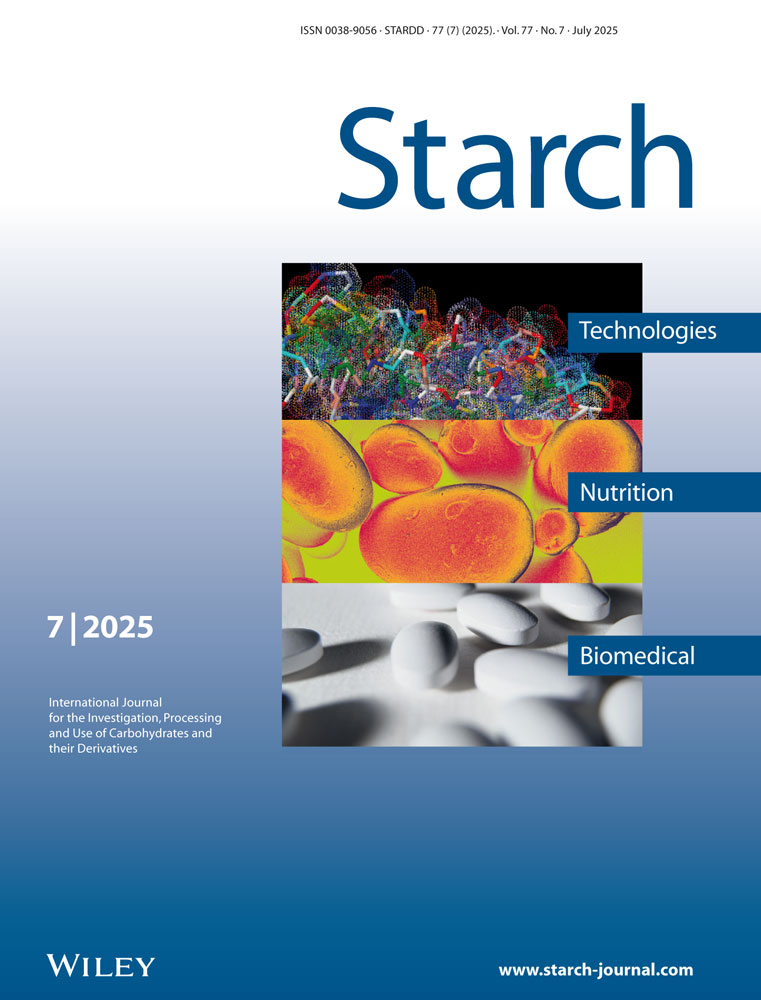Physicochemical Properties of Casein-Starch Interaction Obtained by Extrusion Process
Abstract
Extruded samples of starch-casein blends were processed by using a single-screw extruder. The independent variables in the process were temperature (126–194°C), moisture content (18–29%) and starch-casein blend (5–95%). These independent variables affected significantly the physicochemical and textural properties of the biopolymers. The highest values for expansion (EXP) and water absorption index (WAI) were found when a higher starch proportion was present in the blends, at 126°C barrel temperature and moisture content higher than 25%. By increasing the barrel temperature, from 126°C to 194°C, the water solubility index (WSI) and color parameter were increased. Initial viscosity (IV) and viscosity at 90°C (V90) were mainly affected by the barrel temperature at 194°C. However, the viscosity at 50°C (V50) was affected neither by the different extrusion variables nor by the biopolymer proportion in the blends. Compression force (CF) was strongly dependent on moisture content and casein proportion in the blend. The higher CF values were found at starch concentrations around 50% and 25% moisture content, for higher or lower values than these the obtained extruded products were softer and consequently had lower CF values.




